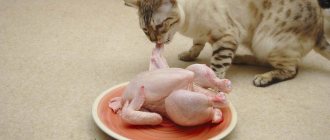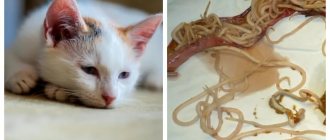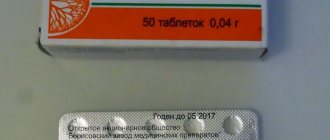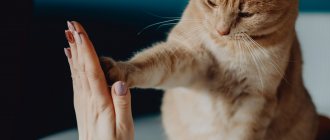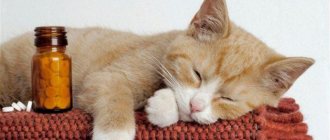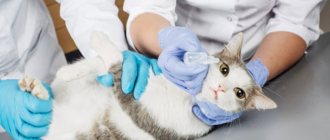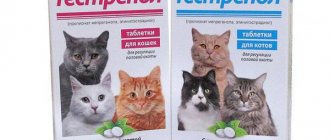8136Pavel
Miramistin for cats is used similarly to chlorhexidine, which is a powerful antiseptic. Wounds on the body, as well as damaged, inflamed mucous membranes should be treated with the drug. To the question whether a cat can have Miramistin, the answer is yes.
The drug is effective against streptococci and staphylococci, as well as various bacterial pathogens. In addition, the product has a destructive effect on many fungi and protozoa. It is also allowed to use antiseptics in veterinary medicine to eliminate inflammation caused by anaerobic and aerobic, gram-positive and gram-negative bacteria.
© shutterstock
Description and characteristics of the drug
When treating an animal, it is more convenient to use Miramistin, which comes in a bottle with a spray nozzle. This is a colorless liquid that foams when the bottle is shaken, at a concentration of 0.01%.
It is allowed to use an antiseptic in veterinary medicine to eliminate inflammation caused by anaerobic and aerobic, gram-positive and gram-negative bacteria.
Instructions
Release form, composition and packaging
Solution for topical use
colorless, transparent, foaming when shaken.
Excipients: purified water - up to 1 liter.
50 ml - polyethylene bottles (1) with a urological applicator with a screw cap - cardboard packs. 100 ml - polyethylene bottles (1) with a urological applicator with a screw cap - cardboard packs. 50 ml - polyethylene bottles (1) with a urological applicator with a screw-on cap, complete with a spray nozzle - cardboard packs. 50 ml - polyethylene bottles (1) with a urological applicator with a screw-on cap, complete with a gynecological nozzle - cardboard packs. 100 ml - polyethylene bottles (1) with a urological applicator with a screw-on cap, complete with a gynecological attachment - cardboard packs. 100 ml - polyethylene bottles (1) complete with a spray nozzle or equipped with a spray pump and a protective cap - cardboard packs. 150 ml - polyethylene bottles (1) complete with a spray nozzle or equipped with a spray pump and a protective cap - cardboard packs. 200 ml - polyethylene bottles (1) complete with a spray nozzle or equipped with a spray pump and a protective cap - cardboard packs. 500 ml - polyethylene bottles (1) with a screw cap with first opening control - cardboard packs. 500 ml - polyethylene bottles (12) with a screw cap with first opening control - cardboard boxes for consumer packaging (for hospitals).
Operating principle
The active components in the drug destroy the membrane of pathogenic cells, as a result of which pathogenic bacteria die. "Miramistin" has several actions:
- antiseptic;
- absorbent (absorption of purulent discharge);
- bactericidal;
- regenerating;
- antiviral;
- increasing the protective properties of cells.
Important! You should not get carried away with an antiseptic when there is inflammation of the mucous membranes, since they have a rather delicate structure and a peculiar microflora, which can be disrupted by frequent use of a foreign element.
The drug is effective against spore-forming bacteria and strains (including those resistant to antibiotics), gram-positive bacteria, fungi and viruses of various origins. The medicine cleanses the wound, promotes the division of healthy cells, tightening the edges of the wound. For burns and infections, the active substance absorbs exudate. Miramistin relieves the symptoms of itching and pain.
Gingivitis in cats
Gingivitis is inflammation of the gums. The disease does not occur often and is mostly associated with dental problems, violation of animal feeding rules, as well as insufficient intake of vitamins A and C.
Causes
The main cause of gingivitis in cats lies in problems with the dental system. It is believed that gum inflammation is the first sign of the beginning of destructive processes in the tissues surrounding the tooth.
It can lead to pathology:
- malocclusion, when chaotically located teeth injure the inner surface;
- disruption of the digestive tract;
- vitamin deficiency, especially on the gums, the lack of vitamin C and vitamin A - the so-called vitamins of health and immunity - is reflected;
- tartar;
- caries.
All of these are endogenous (internal) reasons related to the overall health of the pet. But there are external factors that have a direct impact on the development of the disease.
The most common of them is improper feeding, or rather the wrong foods. For example, tubular bones, which some owners manage to give to their pets, injure the oral mucosa with their sharp edges.
First, small wounds form - microcracks, in which microbes settle and multiply. Naturally, over time, the inflammatory process will affect adjacent tissues, causing swelling, redness, bleeding and pain.
A similar picture can be observed when sharp objects accidentally enter the mouth, for example, during outdoor games or during preventive or therapeutic manipulations in the mouth performed by cat dentists.
Exogenous, that is, external factors, also include the impact of:
- radiation (for example, radiation therapy or high doses of x-rays);
- influence of chemicals;
- infectious processes - gingivitis often accompanies viral diseases such as calcivirosis, rhinotracheitis, panleukopenia.
Signs
With gingivitis, the animal's gums become swollen and painful.
Gingivitis in cats can be either mild or severe with the formation of ulcers.
The most common symptoms will be:
- redness of the mucous membrane;
- swelling of the gums;
- bleeding;
- soreness;
- increased salivation;
- in case of severe pain or a generalized process, when the entire surface of the gums is affected, the animal will refuse food.
If ulcers form, the cat’s general condition also worsens: the cat’s mood disappears, body temperature rises, the pet becomes indifferent to its surroundings, lies or sleeps more. In addition, bad breath appears, and in some cases the submandibular lymph nodes become enlarged.
The longer no measures are taken to stop the process, the greater the chance that the teeth will begin to loosen, fall out, and eventually the animal will become toothless.
Untreated gingivitis also poses another danger: it can cause inflammatory processes in the intestines and even become a gateway to more serious infections, which normally pose no danger to the animal.
Preventive actions
Prevention is actually simple:
- monitor the condition of the animals’ teeth by conducting periodic examinations; Don’t forget to brush your teeth at least once a week;
- feed correctly, paying attention to the composition of the feed; in the winter months, introduce vitamin supplements into the diet, and in the summer, do not forget to use special grass for cats, saturated with elements necessary for immunity;
- Clean tartar on time.
Diagnosis
Diagnosis does not cause any difficulties - an experienced specialist will immediately recognize the disease upon visual examination. When making a diagnosis, one of the main points is to identify the cause of the disease, because it is no secret that only by eliminating the influence of the pathogenic factor can the pet be cured.
How is the treatment carried out?
Any form of gingivitis in cats requires an individual approach, and therapeutic measures will depend on the form and severity of the process.
They mainly resort to sanitation of the oral cavity, the purpose of which is to destroy pathogenic microbes:
- Plaque is cleaned with a brush;
- if there is tartar, it is also cleaned using special methods in a specialized clinic;
- after this, the mucous membrane is treated with disinfectant solutions or ointments; These can be Miramistin, Metrogyl Denta, Dentavedin, etc.
If simple sanitation does not help, then they resort to removing the tooth that led to the development of gingivitis.
In case of severe inflammatory processes, it is necessary to resort to antibiotic therapy, however, their use unless urgently necessary is inappropriate. Antibiotics negatively affect the immune system, and when there is no immunity, there is no health.
Gingivitis is a disease that, if timely measures are taken, does not pose a threat to the cat’s life. By following simple rules of care and maintenance, it is quite possible to avoid it. Health to you and your pets!
Loading... Share on social networks
Indications for use of the drug
The drug is indicated for the treatment of a number of infections, including genital and food infections; it is also effective in washing wounds of various origins.
Important! An antiseptic is not an antibiotic, and in case of serious illnesses it is recommended to consult a veterinarian.
Treatment of wounds
Any wound should be treated with an antiseptic to prevent infection from aggravating the condition. The affected areas are washed twice a day. If there is a cavity in the wound area, it also needs to be washed. It is convenient to administer the medicine using a syringe. Sometimes a veterinarian recommends cleaning your pet's sutures after surgery. This approach will speed up skin healing.
If the cat has serious symptoms, then veterinary attention will be required, and self-medication is unacceptable.
Treatment of burns
The burn should be washed with Miramistin and a not very tight bandage made of sterile material should be applied. An open wound will become an ideal environment for infections to penetrate and multiply.
In inflammatory processes
Inflammation of the mucous membrane in a cat's mouth can be caused by stale food. A pet in pain will refuse food and drink water more often. How to properly and painlessly treat a cat’s mouth is an important question. Proud, furry animals do not tolerate coercion, therefore, first of all, the pet needs to be calmed and, if possible, immobilized; it is better to carry out the procedure with an assistant. The treatment should be carried out by moistening a cotton swab or swab with the product. Disinfection of the oral cavity is also carried out after dental surgery, for example, after cleaning tartar.
For various ear diseases in cats, before carrying out the main treatment, with drops or ointments, the area of the auricle is first cleaned and disinfected. Spray a cotton swab with Miramistin and gently lubricate the inner surface of the ear. Cats, like people, can get conjunctivitis. Symptoms of the disease are tearing and accumulation of purulent mucus in the corners of the eyes. The animal will experience pain when looking at the light.
Inflammation in the vagina in animals is not uncommon, especially with a large number of newborn kittens. Veterinarians often prescribe Miramistin to wash the genitals of a cat that has just given birth. For inflammation caused by injury or infection, the drug is used only as an adjuvant against the background of the main treatment.
Find out more about how to deliver a cat.
Prevention before planned mating
Before the planned mating of animals, it is necessary to ensure the health of the future offspring. To do this, carry out a one-time preventive treatment of both cats and cats with the drug.
For a runny nose in cats
Accumulations of mucus in the sinuses and passages make life difficult for your pet. Rinsing the nose can help. The medicine must be drawn into the syringe in advance. To carry out the procedure, place the animal on your knees, holding it by the neck with one hand.
Take the syringe with the medicine in your other hand. Pointing the syringe hole at the nostril, gently press the plunger, and do the same with the second nostril. The procedure must be carried out until the symptoms disappear.
From insect bites
Cats often suffer from their own curiosity, for example, they may sniff a bee or wasp. It all ends sadly: a bite, irritation and swelling. Worst of all, if swelling interferes with normal breathing, it is better to seek qualified help. It will also be needed if the animal is allergic to insect venom, since this is a high risk of anaphylactic shock. First aid - treatment with Miramistin - will reduce itching and inflammation.
For ticks and fleas, cats are also recommended to use: “Stronghold”, “Bars”, “Advocate”, “Sinulox”, “Advantage”.
For skin irritations
Cats, like people, live in symbiosis with various microorganisms. Bacteria that are present on the skin usually do not harm the wearer. However, with poor nutrition, lack of vitamins, or after an illness, the pet’s immunity is weakened, and this leads to the activity of microorganisms and irritation on the skin.
Irritation is aggravated by causing itching and, accordingly, scratching at the affected area. In this case, the affected areas of the body are treated with an antiseptic with an antifungal effect.
Diagnostics
Establishing an accurate diagnosis is 50% of success when starting therapy for otitis media in cats. The doctor must collect an accurate history (the strength of the manifestations, the presence of discharges, the behavior of the animal, medications taken the day before, as well as new foods in the diet are taken into account).
A clinical examination of the pet is also carried out. The veterinarian examines the ears in detail (in case of severe pain, the cat is given an anesthetic).
For examination, a special instrument is used - an otoscope, which allows one to examine not only the area of the outer ear, but also the deep structures. In case of otitis caused by tumor processes in the ear, during diagnostic measures the animal is administered antihistamines to simplify access to a visual examination in the area of the eardrum.
The cat owner should know that before going to the veterinarian, even if the ears are heavily contaminated with pus and dirt, cleaning is not recommended. The veterinarian must take a sample from the ear canal for cytological analysis and bacterial culture on nutrient media. This is important for making an accurate diagnosis and determining the source of the disease.
If fungal otitis is suspected, a test is carried out to determine the type of fungus that has affected the ear canal. In rare cases, to make a diagnosis of otitis media, a tissue biopsy (if cancer is suspected) and computed tomography (if the inflammatory process affects the deep structures of the ear) are performed.
Instructions and areas of application of the drug "Miramistin"
The drug can be used by adults and kittens from the age of 2 weeks. Dosages for use:
- runny nose - wash each nostril once a day;
- skin irritations, bites and scratches - 2-3 times a day;
- treatment of sexually transmitted infections - twice a day;
- the oral mucosa is wiped up to 3 times a day;
- burns are treated about 4 times a day;
- The cat’s eyes are washed once a day;
- festering wounds are treated twice a day.
You cannot use an antiseptic on closed abscesses: this will delay their maturation and prolong the pet’s suffering, and also create the danger of pus erupting under the skin. You should also not use the product to treat a bleeding wound; you must first stop the bleeding.
Reviews about Miramistin
“Universal antiseptic”, “a remedy for many diseases” - this is how many positive reviews about the drug Miramistin begin. Parents of small children write that the solution in a plastic bottle with a spray bottle has become a real salvation from frequent colds.
Valentina: “As soon as autumn comes, the child begins to sniffle, wheeze, and complain about pain in the ear. Miramistin has often helped out in such cases, and I hope it will not fail in the future. We buy a 150 ml bottle, enough for the whole family for several months. The product is effective and the price is reasonable.”
Polina: “I protect myself from viral infections with Miramistin. The drug alone will not cope with a cold that has already begun. But I act more cunningly: during epidemics, I spray it in the throat, wipe the inside of the nose and ear canal with a cotton swab moistened with a solution. I only do this if I feel unwell, not every day.”
Konstantin: “I read that this is a multifunctional remedy: antiseptic, anti-inflammatory and antibacterial. Somehow I didn’t believe in such universality. But in vain. Now I never part with Miramistin in winter and summer. I rinse and spray from the nozzle into my throat when it hurts, and leave the cotton wool with the solution in the ear canal at night. By morning it's much better. Acne on the face becomes inflamed - I wipe it with Miramistin.”
>How to give Miramistin to a cat?
Contraindications and side effects
A side effect may occur in the form of a short-term itching or burning sensation. Due to the absence of contraindications for use, use during pregnancy and lactation of females is allowed. An allergy to the composition is possible (in rare cases). The advantage of the drug is that while it negatively affects parasitic or pathogenic bacteria, it does not affect healthy cells of the body.
Did you know? Cats' kidneys have the ability to filter out salt. Thanks to this, the animal can quench its thirst with sea water.
Ways to use antiseptic for animals
The antiseptic is available in the form of a solution with a concentration of 0.001%, 0.005%, packaged in bottles with a capacity of 10 to 1000 ml, equipped with attachments - a pipette, a spray.
An antiseptic is used by introducing into the animal’s body:
- orally – for the treatment of the gastrointestinal tract;
- in the form of nasal and eye drops;
- intrauterine - catheter, Janet syringe;
- intracisternal injections – for mastitis;
- superficially - impregnated bandages, tampons, spraying.
Unique properties of antiseptic for animals and mechanism of action
Antiseptic for animals has antibacterial, anti-inflammatory, regenerating, wound-healing properties. It contains no antibiotics and is not addictive to the components.
Silver nanoparticles are fixed on the walls of the affected cells, which is greatly facilitated by the loosening of cell membranes by miramistin, which also has an antibacterial effect, which causes a synergy effect. Then silver ions attack transport proteins of various membranes, and the pathogenic cell dies. Healthy tissues do not participate in the process, remaining undamaged. Studies conducted in 30 regions of Russia and the CIS confirmed the safety of the antiseptic.
With long-term use exceeding the dose sufficient for this by 10 times, not a single animal was harmed, and the composition of the serum and blood did not change. Recovery occurs 3-5 days earlier compared to other types of antiseptics. The combination of unique qualities and the attractive price of the course of treatment distinguish the drug and place it in a leading position among similar ones.
Symptoms and complications
- Excessive salivation is the very first characteristic sign of the disease; drool is usually viscous and hangs in the form of “icicles”. It is easy to detect in the initial stages of gingivitis in cats and begin treatment on time.
- Swelling – puffiness is a fairly noticeable symptom; the gums begin to “hang” over the teeth.
- Redness – the gums may also have whitish spots or be bluish in color. Upon examination, there will be a bright red stripe on the gums near the base of the teeth. Normally, cats have pale pink oral mucosa.
- Bleeding can be independent and constant, or detected by pressure.
- Strong unpleasant odor from the mouth.
- Severe pain - the cat reacts aggressively to an attempt to examine the mouth, begins to refuse food, and loses weight.
With ulcerative gingivitis, characteristic ulcers appear on the gums; due to pain, the cat may refuse not only food, but also water. Weight is greatly reduced, even extreme degrees of exhaustion are possible.
As inflammation worsens, the lesions spread deep into the tissues. The ligamentous apparatus of the teeth is affected, which leads to their loss, inflammation of the jaw bones and the occurrence of sepsis are possible.
Gingivitis is dangerous due to its purulent complications; abscesses form not only in the oral cavity, but can also cause the formation of ulcers in the internal organs.
When the animal becomes chronic, it becomes lethargic and there are constant digestive disorders in the form of diarrhea or constipation. The fur becomes matted and dirty, and an unpleasant odor emanates from the mouth. Against the background of constant malnutrition and exhaustion, the cat’s character changes - it becomes aggressive, angry, and infections and diseases of the internal organs also appear.
how to treat a cat's gums
Gums after tooth extraction - consequences
After the doctor has performed an operation to remove a tooth, you should carefully follow all the recommendations of the dentist, who will definitely tell you how to care for the hole, what the gums usually look like after tooth extraction , and in what cases you should seek medical help.
We recommend reading: Signs of Calcium Deficiency in Dogs
It is worth considering that in any case, after tooth extraction, you will have to go through some unpleasant moments when the anesthetics stop working. After all, tooth extraction is a surgical operation and tissue restoration will take some time, especially in situations where the removal was difficult and the doctor had to make incisions in the gums.
In the postoperative period, you should be very careful about oral hygiene procedures, we are not only talking about brushing your teeth, but also that your mouth should be rinsed every time after eating, you can use a saline solution, a decoction of chamomile, sage, calendula and other herbs, having anti-inflammatory and antiseptic effects. And if a toothache occurs, you should immediately ask your doctor how to relieve it at home.
You should definitely consult a doctor if your gums become very inflamed and bleed for several days, and even more so in cases where there is discharge of pus. The necessary rehabilitation measures can only be carried out in a dental clinic.
Inflammation can develop as a result of improper oral hygiene in the postoperative period, due to decreased immunity, or the penetration of pathogenic microorganisms into the wound. As a rule, after tooth extraction, doctors recommend maintaining body tone with the help of immunomodulatory agents and vitamin preparations.
Every person who has had a tooth removed is faced with the question: how to properly go through the restoration process?
Source
How to rinse your mouth with chlorhexidine
Chlorhexidine is a well-known and very popular antiseptic against inflammatory processes in the oral cavity. It is considered the best analogue of expensive myrism, because it is able to perform the same functions at a much lower price. The main thing is to use it correctly so as not to aggravate the situation.
Chlorhexidine is used for diseases of the oral cavity: stomatitis, periodontitis, tonsillitis, laryngitis, pharyngitis, gingivitis, tonsillitis and in other cases as prescribed by a doctor. This solution can even treat traumatic lesions of the oral mucosa and larynx. Chlorhexidine is used for the prevention of stomatitis, as well as in the postoperative periods when dental or ENT interventions were performed. Almost any disease of the mouth and throat can be eliminated with chlorhexidine. But it can only be used as prescribed by a doctor and in the prescribed dosage.
The first thing you need to do is buy the right product at the pharmacy and not confuse anything. After all, chlorhexidine is available in a variety of forms: tablets, gels, aerosols. When purchasing, you should ask your pharmacist for an aqueous solution of chlorhexidine 0.05%. Only a solution in this concentration can be used for rinsing the mouth or throat. Make sure that you do not purchase an alcohol infusion - it cannot be used for treatment, since it is mainly used for disinfecting premises.
It should be remembered that it is the doctor who must tell in detail how many procedures can be performed in this particular case and in what dosage. After rinsing, brushing your teeth, eating or even drinking normally is not allowed for two hours. Otherwise, the treatment will not give a useful result. During treatment with chlorhexedine, when procedures are carried out day after day, it is worth thoroughly rinsing the mouth with water after brushing your teeth. Otherwise, the paste remaining in the mouth will reduce the intensity of the
Source
How to treat and treat ulcers on the oral mucosa?
How to treat and treat ulcers on the oral mucosa? What medicines and folk remedies? What remedies should be used to treat a child?
It is better, of course, to consult a dentist. Children can use “Kalgel”, “Kamistad”, “hexoral” - (from 4 years old) - they have an analgesic and anti-inflammatory effect, Heliomycin ointment. "Propolis - spray." Rinsing with a decoction of chamomile and sage is very useful. Can be lubricated with Lugol's solution. Be sure to use carotoline and rosehip or sea buckthorn oil for better healing.
In this case, you need to treat your mouth with Miramistin, spray not only on the sores, but you need to treat the entire mouth and throat.
The healing of such mouth ulcers is facilitated by rinsing with an antiseptic solution (I use chlorhexidine). You can simply apply wound healing ointments or gels. If it doesn't go away after a couple of days, contact your dentist or therapist. Ulcers don't just form. Most likely, this is a stomach disease or banal caries.
Aphthous stomatitis is considered an extremely insidious and serious disease. It affects the tissues of the oral mucosa throughout the entire thickness of the mucous membrane. This dental disease is considered more severe than catarrhal stomatitis. In the latter case, the lesion occupies a smaller area of the mucosa, and the surface layer suffers.
Several mouth ulcers or one occurs with aphthous stomatitis. Even one small ulcer causes serious suffering to the patient. The patient suffers due to weakness and severe pain. Nutrition is disrupted because it is completely impossible to eat. Elevated body temperature and severe chills persist for a long time.
You can smear it with brilliant green, you can rinse with an iodine solution (10 drops per 200g of water), you can rinse with hydrogen peroxide (10 drops per 100g of water). ABOUT
Source
Is it possible to wash a cat's eyes with Miramistin?
In many countries, cats have long been sacred animals to this day.
Natural grace, dexterity, acute vision - these are the qualities that each member of the cat family possesses, but, alas, they are not immune from eye diseases.
They can be caused by a variety of reasons, ranging from poor nutrition to viral diseases. Of course, first of all, we rush to see a veterinarian so that there are no complications.
But what to do if visiting a doctor is currently impossible for some reason and how to alleviate the suffering of your pet? This is exactly what will be discussed further.
Home medicine - pros and cons
Usually the audience is divided into fans of home medicine, which does not always help, or after a certain time, which is very unbalancing in critical situations, and sometimes aggravates the general condition of the animal, because it is simply inappropriate for the given situation. These include:
- Rinse eyes with strong tea leaves.
- Rinse with chamomile decoction.
- Washing with calendula decoction, etc.
The effect of strong tea leaves has supposedly been tested for years. But the fact is that the tea leaves must not only be of a certain variety, you also need to know the exact quantity that is required for brewing.
Undoubtedly, herbal decoctions such as chamomile and calendula have an anti-inflammatory effect, but they are always prescribed along with medications, since they treat, but do not cure the source of the disease.
You should always remember this when using home medicine in your home.
The second part of the audience prefers safer, proven products that are fast-acting and hypoallergenic. These include various kinds of antiseptics, drops and antibiotics, of which there are countless in any pharmacy.
But the fact is that your pet may have an allergic reaction to some medications, so it is better to consult a veterinarian about this.
In the first few days, it is better to opt for antiseptic agents; they will quickly relieve inflammation and swelling and will not harm the cat.
"Miramistin" - how it works and what it is intended for
One of the most proven antiseptics, which is widely used in medicine, is Miramistin. The mechanism of action is associated with the hydrophobic interaction of the drug with the cytoplasmic membranes of microorganisms, which leads to their destruction. Acts bactericidal. This is a topical solution intended for:
- Prevention of suppuration and treatment of purulent wounds in surgical and obstetric practice.
- Treatment of superficial and deep burns.
- Treatment of stomatitis, hygienic treatment of removable dentures.
- Treatment of otitis media, sinusitis, tonsillitis, laryngitis (as part of complex therapy).
- Prevention of diseases of the genital area, etc.
This means that if the product is suitable for treating our mucous membranes, it will also be suitable for our smaller brothers.
Directions for use and doses
As for the direct application, it is advisable to buy a bottle with a sprayer, since for the most part our pets do not like this procedure, and thanks to it, the maximum amount of medicine will get into the eyes.
One spray in each eye three times a day is sufficient. You can also pour the solution into a bottle using any drops and apply eye drops in the usual way - two drops three times a day, whichever is more convenient for you.
Alternatively, simply moisten a cotton swab with Miramistin solution and wipe around the eyes.
The only possible disadvantage is adverse reactions, which are extremely rare, and represent a burning sensation at the site of application - it goes away on its own within a few seconds and does not require discontinuation of the drug.
The solution should be stored at room temperature, out of direct sunlight. But it should be remembered that this drug helps only in the initial stages of the development of the disease and is more of a preventative than a therapeutic agent.
It is also not worth using it on an ongoing basis, since any mucous membrane has its own microflora, and any antiseptic, eye drops and other medications wash it out; treatment should not exceed two weeks.
Therefore, as an essential remedy, Miramistin should be in every first aid kit, as it can be useful not only for you, but also for your pets.
From washing wounds to treating mucous membranes, this drug is an “ambulance”. And most importantly, do not self-medicate.
At the first opportunity, visit a veterinarian so as not to start the disease and begin full treatment on time.
Useful materials:
- Tobrex for cats Instructions for useTobrex drops contain a broad-spectrum antibiotic - tobramycin from the group...
- Cutaneous horn General description of the disease Cutaneous horn on the forehead or face (ICD 10 code - L57.0) -...
- Amlodipine for cats Instructions for use of Amlodipine: in medicine and veterinary medicine VetConsultPlus Information portal Therapy Brief characteristics…
- Sarcoma in cats What is sarcoma? This is the name of not just one, but a whole group of diseases that are divided according to the type of affected...
